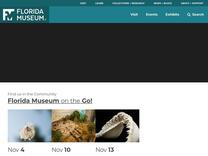Vero Canal Site, Stratum 2 – Florida Vertebrate Fossils https://www.floridamuseum.ufl.edu/florida-vertebrate-fossils/sites/vero-canal-site-stratum-2/
Vero Canal Site, Stratum 2 University of Florida Vertebrate Fossil Locality IR005 Location The site is located within the City of Vero Beach, Indian River County, Florida, to the southeast of the municipal airport. 27.65º N; 80.40º W. Age Late Pleistocene Epoch; late Rancholabrean land
However, the lower layers of sand in Stratum 2 were probably deposited by wind under

